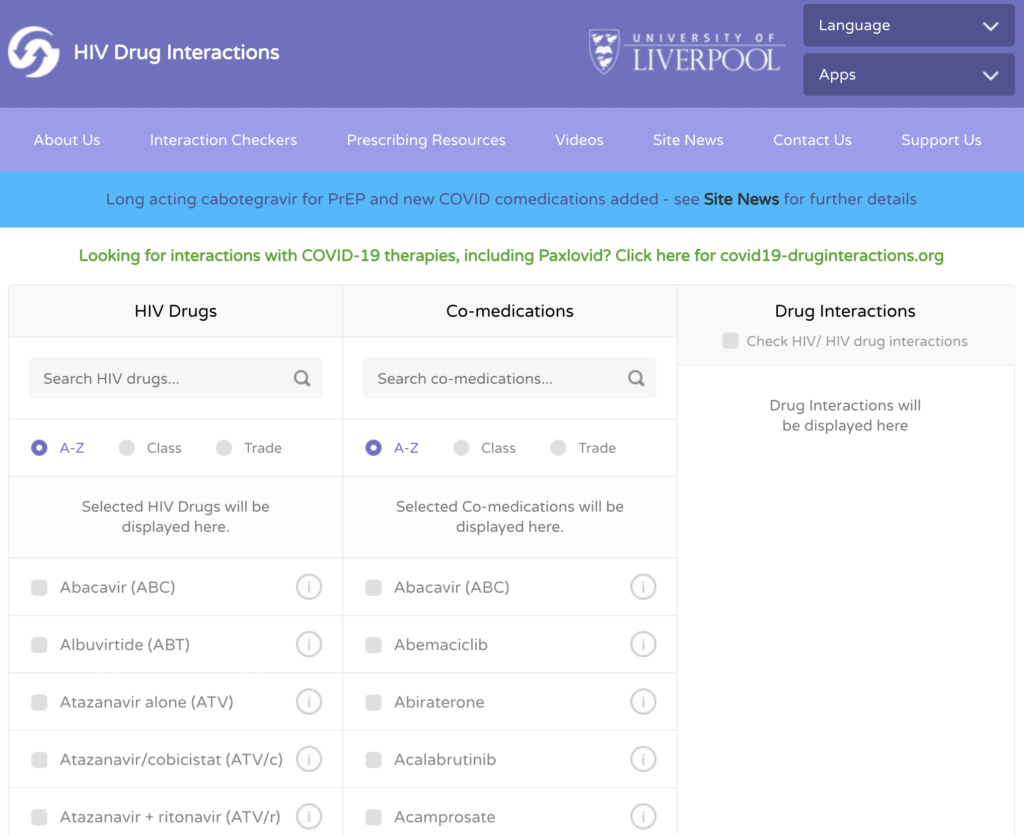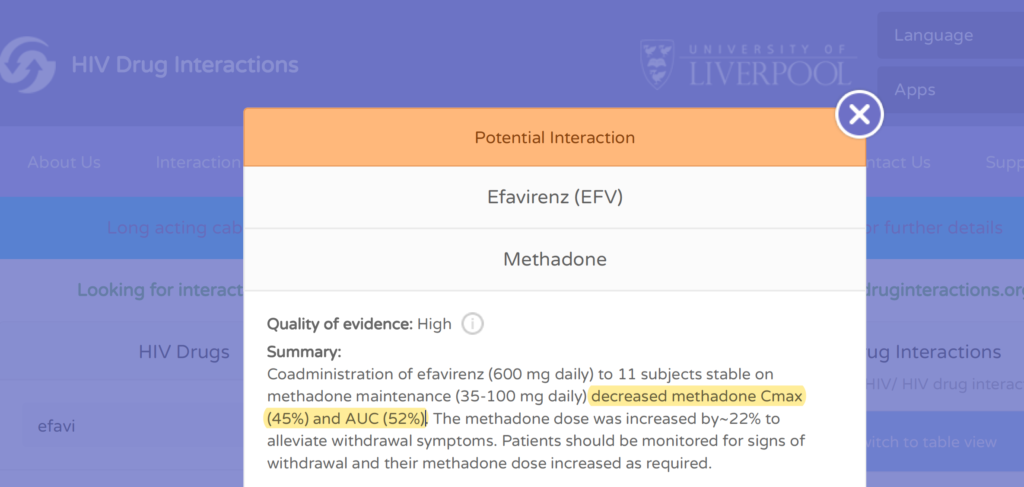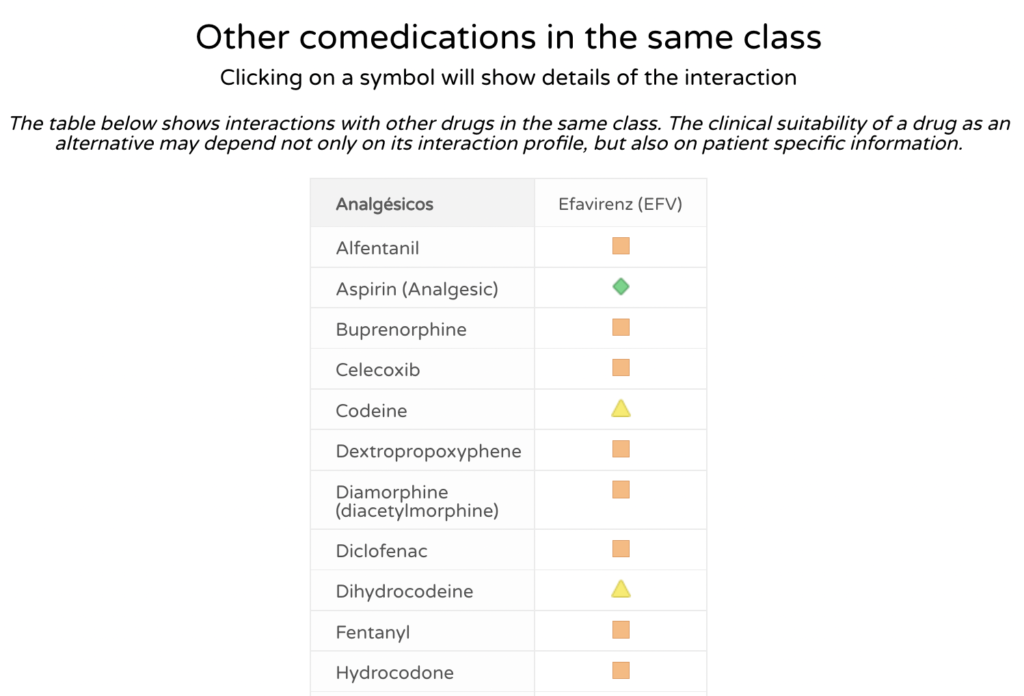This article was published on May 16, 2022.
Why this is important for mental health clinicians
Antiretroviral medication used for the treatment of HIV can have many different drug interactions—some of them very serious—with many medications, including psychiatric medications.
Interactions between HIV medications and psychiatric medications can range from insignificant to life-threatening, for example, torsades de pointes or respiratory depression (Goodlet et al., 2019).
Just as one example, let’s say a patient’s HIV treatment included either efavirenz or nevirapine and the patient was on methadone for the treatment of opioid dependence. Not an uncommon situation! If the efavirenz or nevirapine is stopped for any reason and we don’t proactively decrease the dose of the methadone, the patient could develop serious and possibly fatal methadone toxicity (Goodlet et al., 2019).
Yeah. It is very helpful for us to know of an easy-to-use and reliable drug interaction checker for HIV medications. When the need arises, we can check for possible drug interactions between HIV medications and the medications we are prescribing.
Drug interactions with HIV medications can include various possible combinations:
– The antiretroviral may decrease serum levels of the other medication
– The antiretroviral may increase serum levels of the other medication
– The other medication may decrease serum levels of the antiretroviral, which can lead to failure of treatment for HIV. This could be a disaster!
HIV Drug Interactions checker
Since there is now a long list of antiretroviral medications, it is impossible for clinicians to remember all possible drug interactions with these medications. Fortunately, there is a reliable and easy-to-use tool to look up drug interactions when prescribing any medication to a person who is on antiretroviral treatment. This is the University of Liverpool’s HIV Drug Interactions checker. It is available in both English and Spanish. Here is the link:
https://www.hiv-druginteractions.org/checker
When we click to choose “English” as the language, it brings us to the search screen shown in the image below.

Next, I’ll walk us through an example of how to use this drug interaction checker.
We choose the HIV drug(s) in the left column and the other medication(s) in the middle column—-whether or not there is a potential drug interaction shows up in the right column. One of four options will be displayed:
– Do Not Coadminister
– Potential Interaction
– Potential Weak Interaction
– or No Interaction Expected.
For example, in the image below, I chose the HIV drug efavirenz and the co-medication methadone. The result in the right column shows that there is a “Potential Interaction”.

If we click on the box that says (in this example) “Potential Interaction”, a box with details of the potential drug interaction and an explanation pops up.
Continuing with the example above, I clicked on the box for “Potential Interaction” and got a pop-up explanation. The image below shows a part of that pop-up explanation. I have highlighted in yellow the important point that when efavirenz is given to a patient who has been on methadone (or the other way around), total exposure to methadone, represented by the Area Under the Curve (AUC) is reduced by about 50%. Importantly, we would expect the reverse as well. If efavirenz is stopped for any reason, the exposure to methadone could double, which could be fatal.

“Look for alternatives”
One more thing. Let’s say we find a potential drug interaction between the HIV drug and the other medication(s) that we don’t want to deal with. This HIV Drug Interaction checker allows us to “Look for alternatives”.
For example, when I clicked on “Look for alternatives” in the example we are using on this page, a list of pain medications opened up with each of them labeled with a symbol indicating one of 4 things—Do Not Coadminister, Potential Interaction, Potential Weak Interaction, or No Interaction Expected. Please see the image below, which shows the top part of that list.

Related Pages
COVID-19 drug interaction checker
Important drug interactions between antiretrovirals and antidepressants
Drug interactions: Main menu
Copyright © 2022 to 2025, Simple and Practical Medical Education, LLC. All rights reserved. The content on this website may not be reproduced in any form without express written permission.
Disclaimer: The content on this website is provided as general education for medical professionals. It is not intended or recommended for patients or other laypersons or as a substitute for medical advice, diagnosis, or treatment. Patients must always consult a qualified health care professional regarding their diagnosis and treatment. Healthcare professionals should always check this website for the most recently updated information.
Leave a Reply